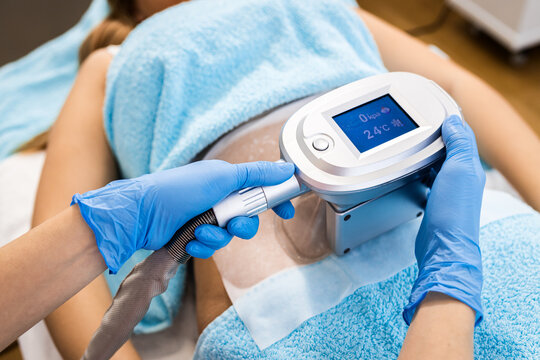In Maryland, obtaining a handgun is not as simple as walking into a store and purchasing one. If you plan to buy a handgun in the state, completing the Maryland Handgun Qualification process is a crucial step. This requirement ensures that prospective firearm owners understand safe handling practices, the state’s firearm laws, and the basics of operating a handgun.
So, what exactly happens after you complete your Maryland Handgun Qualification course, and what are the next steps in legally acquiring and owning a firearm in the state? Let’s break down the process so that you are prepared for the journey ahead.
Step 1: Completing the Maryland Handgun Qualification Course (HQL)
Before diving into what happens next, it’s important to understand that the Maryland Handgun Qualification course is a foundational requirement. This training includes classroom instruction on topics such as:
- Firearm safety: Handling and storing a firearm safely.
- Maryland firearm laws: A deep dive into the legal responsibilities that come with owning a firearm in Maryland.
- Basic firearm operation: Familiarizing yourself with how a handgun works, including safe loading, unloading, and storage.
The course ends with a live-fire training session where you will demonstrate your ability to safely handle and shoot a handgun. Upon successful completion, you will receive a certificate—this is where your journey continues.
Step 2: Applying for the Maryland Handgun Qualification License (HQL)
Once you’ve completed the Maryland Handgun Qualification course, the next major step is to apply for the Handgun Qualification License (HQL). The HQL is necessary to purchase any handgun in Maryland and is tied directly to your completion of the training course.
To apply for the HQL, you’ll need to:
- Submit fingerprints for a background check: This is a critical step in ensuring that you don’t have a criminal history that would prevent you from legally owning a firearm.
- Pay the application fee: The application comes with a fee that must be submitted along with your paperwork.
- Submit your HQL training certificate: A copy of the certificate you received after completing the Maryland Handgun Qualification course is required for your application.
The state’s background check is designed to ensure that individuals applying for an HQL do not have any disqualifying factors such as felony convictions or domestic violence charges.
Once your application is approved, you will receive your Handgun Qualification License, which is valid for ten years. This license allows you to purchase a handgun from a licensed dealer or individual in Maryland.
Step 3: Purchasing Your Handgun
After obtaining your Maryland Handgun Qualification License, you are legally allowed to purchase a handgun from a licensed dealer. However, there are some additional steps and important regulations to keep in mind when purchasing your firearm.
- Waiting Period: Maryland has a seven-day waiting period for handgun purchases, which means there is a mandatory waiting period between the time you purchase the firearm and the time you can actually take it home. This allows the state to conduct any additional checks and ensures that gun buyers are not acting impulsively.
- Gun Registration: Once you’ve purchased your handgun, it must be registered with the Maryland State Police. The dealer will usually handle this step for you when you purchase the firearm, but it’s essential to confirm that registration is complete before you take possession of the gun.
- Safe Storage: Maryland law requires that all firearms be stored securely. This is especially important for households with children or individuals who may be unfamiliar with firearms. You must use a gun safe or lockbox to store your handgun securely when not in use.
Step 4: Additional Training
While completing the Maryland Handgun Qualification course is an essential first step, responsible gun ownership doesn’t end there. As a new handgun owner, continuing education is key to maintaining your proficiency and safety.
Here are a few suggestions for additional training you might consider:
- Defensive Handgun Training: If you are considering carrying a handgun for personal protection, enrolling in defensive handgun training is a wise next step. This type of training focuses on self-defense tactics, concealed carry laws, and how to react in high-pressure situations.
- Concealed Carry Training: If you want to carry your handgun outside of your home, you will need to apply for a Maryland Wear and Carry Permit. To obtain this permit, you’ll need to undergo additional training that covers carrying your handgun safely in public, legal restrictions, and defensive tactics.
- Firearm Safety and Maintenance Courses: While the Maryland Handgun Qualification course covers the basics of firearm safety, it’s also beneficial to enroll in courses that teach advanced techniques in cleaning and maintaining your handgun, ensuring its longevity and optimal performance.
By continually investing in your firearm education, you are committing to being a responsible, knowledgeable, and safe gun owner.
Step 5: Staying Compliant with Maryland’s Firearm Laws
As a responsible gun owner in Maryland, it’s essential to stay up to date with any changes in state laws that affect firearm ownership. Maryland has relatively strict firearm regulations, and failing to comply with new laws could result in penalties or even the revocation of your handgun license.
Some key areas to stay informed about include:
- Changes to concealed carry regulations: If you carry your handgun in public, you need to be aware of any new laws governing how and where you can legally carry it.
- Storage laws: If you own multiple firearms, make sure your storage methods meet the state’s legal requirements to ensure safety and compliance.
- Updates to background check processes: Keep an eye on changes to the application process for obtaining an HQL or any other licenses related to firearm ownership.
You can stay informed by checking with local firearms training centers or by attending seminars and workshops that provide updates on Maryland’s firearm regulations.
Step 6: Maintaining Your Maryland Handgun Qualification License
Once you’ve obtained your Maryland Handgun Qualification License, it’s important to remember that the license is valid for ten years. To continue purchasing handguns legally, you must renew the license before it expires.
While there is no requirement for continuing education after you’ve obtained your HQL, it is still highly recommended that you regularly practice and refresh your firearm handling skills. If you plan to carry your handgun in public, remember that you will also need to apply for and obtain a Maryland Wear and Carry Permit, which has its own requirements.
Why Choose Us for Your Training Needs?
At our training centers in Brandywine, Lexington Park, Annapolis, Ocean City, and Baltimore, we are dedicated to providing expert, hands-on training to ensure that you are fully prepared to navigate the process of obtaining and owning a firearm in Maryland. Whether you need help with your Maryland Handgun Qualification course or are seeking advanced training options, our certified instructors are here to guide you every step of the way.
Ready to take the next step in responsible gun ownership? Sign up here to enroll in our next Maryland Handgun Qualification course and start your journey today. Contact us for more information or to ask any questions about the training process.







0 Comments